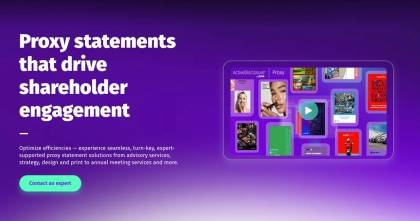Board reports convey key information about a company's performance to its board of directors, so they can make informed decisions. While this sounds straightforward, boards sometimes do not fully understand the financial reports they receive. As a result, their ability to make effective decisions is hampered.
An effective board report should include a three to six page financial report that breaks down the company's financial performance. It should also discuss non-financial aspects and variances from past projections. The report should not just present data, but contextualize it with trend analysis, performance indicators and year-over-year comparisons. Now that you understand what is a board report and how it guides governance, explore these board reports best practices.
8 Board Report Best Practices to Adopt
1. Understand Your Audience
Board members have varying levels of financial literacy. Some might have MBAs and quickly grasp charts, data and reports. Others may need to be walked through the data.
When you understand the financial literacy and relevant background of board members, you can tailor the report to them. More comprehension allows for improved decision-making.
Don't just state the underlying metrics that support strategic goals. Use visual aids such as charts and graphs, which can be easier for some learners to comprehend.
2. Use Clear and Concise Language
Begin the report with an executive summary. Similar to an abstract, this summarizes the main points found in the report.
Throughout the report, avoid acronyms, jargon and complex financial terms. If you do have to use a technical term, define it for the reader.
When you use plain language, you can be sure your meaning was grasped.
3. Visualize Data Effectively
People learn in different ways. Some absorb information verbally, others through reading, and others visually, as mentioned above. Where it makes sense to do so, use visualization aids such as charts and graphs in financial reports.
Optionally, create an interactive dashboard board members can use in real time, drilling down to explore data in more detail.
4. Provide Context and Analysis
Boards of directors need to know what the data says and what it means. This is where context and analysis come in.
By drawing historical comparisons or forecasting future performance, you can chart a path for the board members. Walk them through where the company has been, where it is now and where it is headed in the future.
It is equally important to explain any deviations from budgets or missed benchmarks. Explore the factors that led to a milestone being missed or budget shortfall, as well as the potential implications of the deviation for the company.
5. Focus on Key Metrics
Key performance indicators (KPIs) offer "at a glance" insight into how the company performed towards its goals. For example, while some companies operate at a loss, most companies want to be profitable. Thus, comparing the profitability quarter over quarter or year over year allows the board to evaluate their performance toward this goal.
Financial ratios are an obvious KPI to consider including in the report. Yet there are times when it also makes sense to include non-financial metrics.
For example, the board may wish to understand how satisfied its customer base is if it's thinking about growing market share over a competitor. Or they may want to evaluate operational efficiency when discussing ways to streamline.
6. Ensure Accuracy and Consistency
It is key to make sure that a financial report contains only accurate and up-to-date information. An error in the report could lead to flawed decision-making.
Make sure to work with only the latest copies of spreadsheets, templates and forms.
Leave time to double-check all figures and reports before distributing the report.
7. Facilitate Discussions and Questions
Share the report with the board of directors early. This increases the likelihood they will read the full report before the meeting.
When it comes to actually reporting to the board of directors, the best way to make sure they understand the report is to give them time to ask questions. Leave fifteen to twenty minutes for them to discuss the report and ask any questions. Then, add additional context to help them connect the dots. Remember, you are a resource in helping the board understand and act upon the data contained within the report.
8. Utilize Technology
If this sounds like a lot to prepare, the right technology streamlines the workload. For example, financial reporting software can help pull data, check for accuracy and errors and securely distribute the report!
These eight board reporting best practice tips help you prepare a report that will allow the board to do its job. DFIN offers several tools designed to make board reporting easier. Along with our flagship financial reporting software, DFIN offers financial proxy solutions. Our guide to effective proxies offers advice on humanizing the messaging of this required shareholder communication to make it accessible to a lay audience. Streamline financial reports to the board of directors with our products and services, backed by machine learning and AI.

